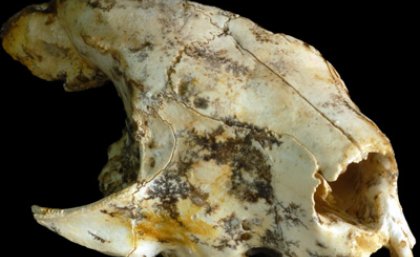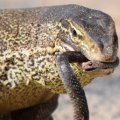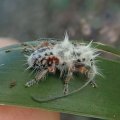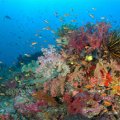
Palaeontologists from The University of Queensland (UQ) and The University of New South Wales (UNSW) have named a newly discovered extinct species of koala after Australian icon, Dick Smith.
The small, ancient koala that lived in the rainforest canopies of northern Australia about 20 million years ago was given the species name Litokoala dicksmithi, in honour of the aviator, adventurer and philanthropist.
Dr Julien Louys from the UQ School of Earth Sciences said the naming, acknowledges Mr Smith’s generous philanthropic efforts.
“We chose the name to thank Mr Smith for his long-term financial support of Australian science, in particular, of fossil research at the Riversleigh World Heritage Area in north western Queensland,” Dr Louys said.
Dr Louys along with UQ colleague Dr Gilbert Price, and lead researcher, Dr Karen Black from UNSW, describe the new species in the Journal of Systematic Palaeontology.
The discovery brings the number of known extinct koala species to 18. Today, only one species of koala remains.
Dr Karen Black said that, while only teeth or jaws of most other extinct koala species have been found, this unearthed skull was exceptionally well preserved.
“The discovery of Litokoala dicksmithi is particularly significant because it is one of only two fossil koala species with preservation of the facial region including the snout,” Dr Black said.
“The other species, called Nimiokoala greystanesi, which was also discovered at Riversleigh, had a skull that was very possum-like in appearance.
“Litokoala dicksmithi appears to have been much more closely related to the modern koala with numerous similarities in the skull that suggest it had a more koala-like, rather than possum-like, face.”
Litokoala dicksmithi was only about a third of the size of today’s koalas, weighing in at approximately three to four kilograms.
“An interesting feature of the Litokoala skull is the extremely large eye sockets which suggest the intriguing possibility that these koalas were nocturnal with sharper vision than the living koala,” Dr Black said.
“Combined with its small body size, this suggests that Litokoala dicksmithi was a more active, agile tree climber than the sleepy, relatively sedentary, cousin that we know.”
Unlike today’s eucalypt-munching koala species, Litokoala dicksmithi fed on the rainforest plants that covered much of northern Australia 20 million years ago and may also have eaten some fruit.
The onset of drier conditions in Australia about 15 million years ago led to the contraction of rainforest habitats and the apparent extinction of many koala species including Litokoala dicksmithi.
This is the second Litokoala species named from the Riversleigh World Heritage Area.
Media contact
UNSW: Dr Karen Black, Lead Researcher, 0428 591 429, k.black@unsw.edu.au UQ: Dr Julien Louys, 07 3365 2176, j.louys@uq.edu.au









